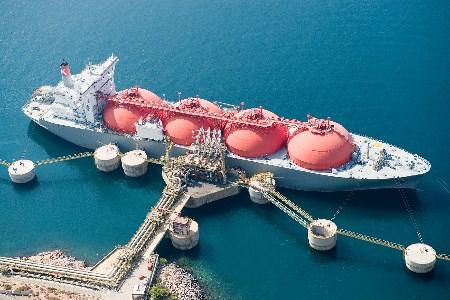Sample Bunker supplier accreditation system - LNG

All bunkering operations within the port area are subject to the Harbour Regulations and the Instructions for Vessels and must be in line with the Environmental Permit for the Port. The bunker vessel/truck must have accreditation from the Port. All bunkering operations must be approved by the Port.
General requirements
Port shall approve each site/berth where LNG bunkering is performed. An application for a bunkering location must include a risk analysis for the intended location, with surrounding areas, and the types of ships referred to be bunkered.
Risk assessment for the LNG bunker operation must be performed according to ISO/TS 18683:2015.
All equipment and systems used for the LNG transfer has to fulfil the requirement of ISO 20519:2017.
Bunker vessel criteria
In order for an LNG bunker vessel to be approved to perform LNG bunkering, the following conditions must be met:
The bunker vessel must be designed and built according to the IGC Code.
Equipped with a linked ESD system (designed to conform to the requirements specified in Appendix D or H of ESD Arrangements & Linked Ship/Shore Systems for Liquefied Gas Carriers, as per ISO 20519:2017).
The vessel must have a safe bunkering procedure, which is carried out according to the approved International Safety Management (ISM) manual on-board.
The bunkering vessel shall have defined hazardous zone(s).
Training of personnel in accordance with requirements
The vessel shall be inspected (SIRE) at least every six months and have no large deviations.
Truck criteria
In order for an LNG truck/Truck company to get permission to perform LNG bunkering, the following requirements must be met:
Must have an operations and emergency manual approved by the Port Authority and relevant authorities.
The truck must be built and operated according to applicable European rules and regulations – ADR 2017.
The truck shall have defined hazardous zone(s).
Procedures and instructions according to ISO/TS 18683:2015.
Training of personnel
The truck is not allowed to have any remarks from the last inspection.
Equipped with a linked ESD system
Receiving vessel criteria
To approve an LNG fuelled vessel for LNG bunkering the following requirements must be met:
The vessel must fully comply with the IGF Code, given that below conditions are met; The IGF Code applies to ships contracted for construction on or after 1 January 2017 (in the absence of a building contract, ships keel laid on or after 1 July 2017), ships delivered on or after 1 January 2021 or ships converted to use gaseous or other low-flashpoint fuels on or after 1 January 2017.
Ships with keel laid before 1 July 2017 to be approved by the flag state and the Port.
Equipped with a linked ESD system (designed to conform to the requirements specified in Appendix D or H of ESD Arrangements & Linked Ship/Shore Systems for Liquefied Gas Carriers, as per ISO 20519:2017).
The vessel must have a safe bunkering procedure, which is carried out according to the approved ISM manual on-board.
The receiving vessel shall have defined hazardous zone(s).
Training of personnel
Emergency procedures
In the event of an emergency during bunkering, emergency communication shall take place by contacting Port representative.
Following information should be included in the emergency call:
The name of the ship(s)
What has happened
Where has it happened
The number of persons injured and the nature of the injuries
The type of assistance required
Measures to be taken in case of fire or emergency on board:
Make an emergency call immediately
Cease all cargo/bunker operations
Start firefighting measures
Disconnect loading arms/bunker connections
Stand by for unberthing
Measures to be taken in case of fire or emergency at the terminal or another
vessel:
Make an emergency call
Stand by to cease all cargo/bunker operations
Wait for additional instruction from port authorities or VTS
Stand by for unberthing
Emergency response planning
Emergency response planning should include provisions to ensure that local authorities and emergency services are aware of the potential risks associated with LNG bunkering.
According to ISO/TS 18683:2015, a contingency plan shall be in place outlining the requirements for the following:
evacuation of personnel and third parties;
mobilising fire-fighting;
mobilising first aid, hospitals and ambulances;
communication to authorities and third parties.
In addition to the above, following emergency situations should be covered:
LNG leakage and spill
Emergency evacuation of LNG in tanks and systems
Gas detection
Fire in the bunkering area
Unexpected movement of the vessel(s)
Unexpected moving of the truck
Unexpected venting on the receiving ship or on the bunkering facility
Loss of power
The contingency plan shall be communicated to all parties involved in the bunkering operation including the planned emergency response team. The role and responsibility of the respective actors should be clearly stated. Practice drills shall be carried out at regular intervals with the participation of all actors involved. Relevant personnel should have undergone training in fighting gas fires, treatment of cryogenic burns etc.
LNG bunkering education and training
Education and training regarding LNG and LNG bunkering are needed on different levels for the parties who may be involved, directly or indirectly, in the bunkering process when LNG is introduced as an alternative to traditional marine fuels. If an incident or accident occurs, all staff must be familiar with what is expected of them.




